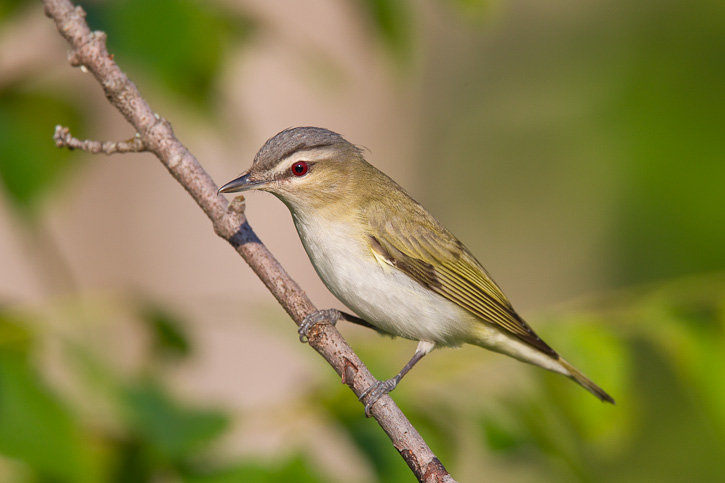
Vireo olivaceus
TAXONOMY
Vireo olivaceus Linneaus, 1766.
OTHER COMMON NAMES
English: Noronha vireo, yellow-green vireo; French: Virйo aux
yeux rouges; German: Rotaugenvireo; Spanish: Vireo de Ojos
Rojos.
PHYSICAL CHARACTERISTICS
6 in (15 cm). Olive green upperparts; white breast and belly.
Dark tips on wings, but no wing-bars. Dark red iris; a black
line through the eye and a white one above. Head has a gray
crown.
DISTRIBUTION
Breeds throughout much of the United States and Canada;
winters in Central America and South America as far south as
Argentina.
HABITAT
Deciduous-dominated forest and woodlands.
BEHAVIOR
A migratory species that defends a breeding territory. The
robinlike song is a series of loud, high-pitched, melodious,
whistled phrases.
FEEDING ECOLOGY AND DIET
Eats small invertebrates. Usually forages on foliage, flowers,
and limb surfaces, but will also capture flying insects; feeds on
small fruits when invertebrates are not abundant.
REPRODUCTIVE BIOLOGY
Builds a small, cup-shaped nest that hangs from a fork in a tree
branch. Lays two to four eggs, incubated by both parents for
11–14 days. Often raises two broods per season.
CONSERVATION STATUS
Not threatened, but its numbers are declining in some parts of
its range.
SIGNIFICANCE TO HUMANS
Birdwatchers may look for this species.
Photo Gallery of - Red-eyed vireo
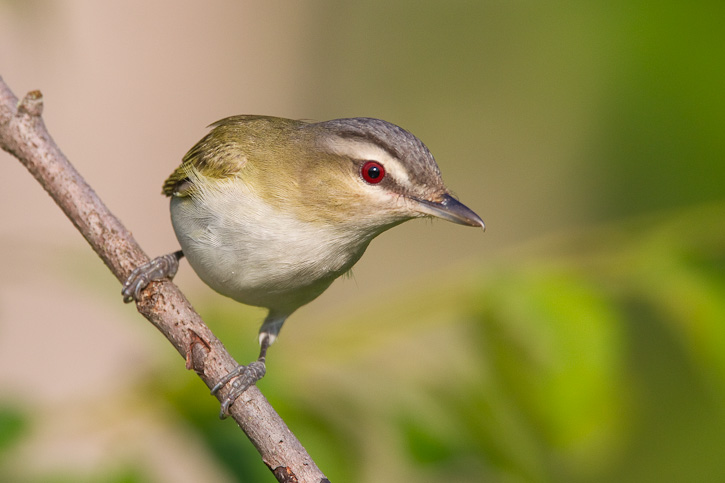
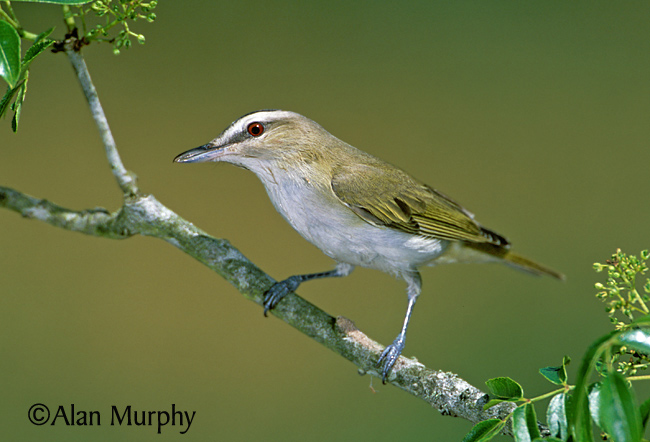
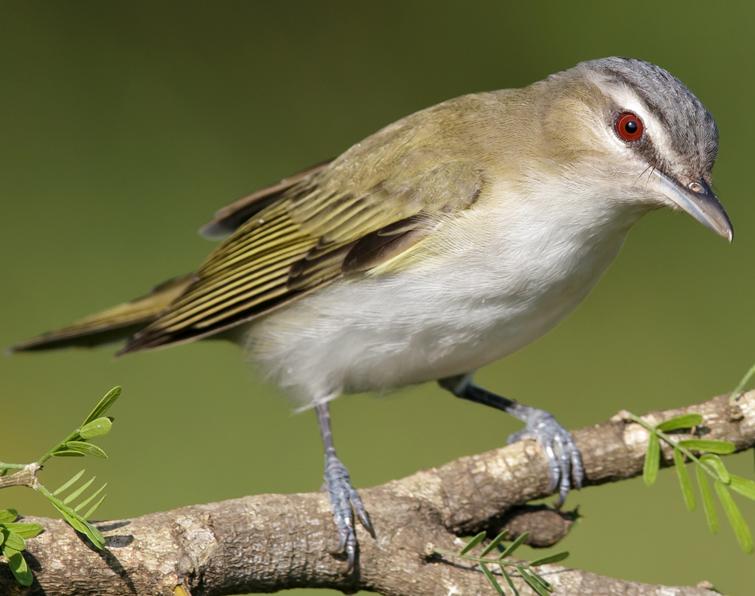
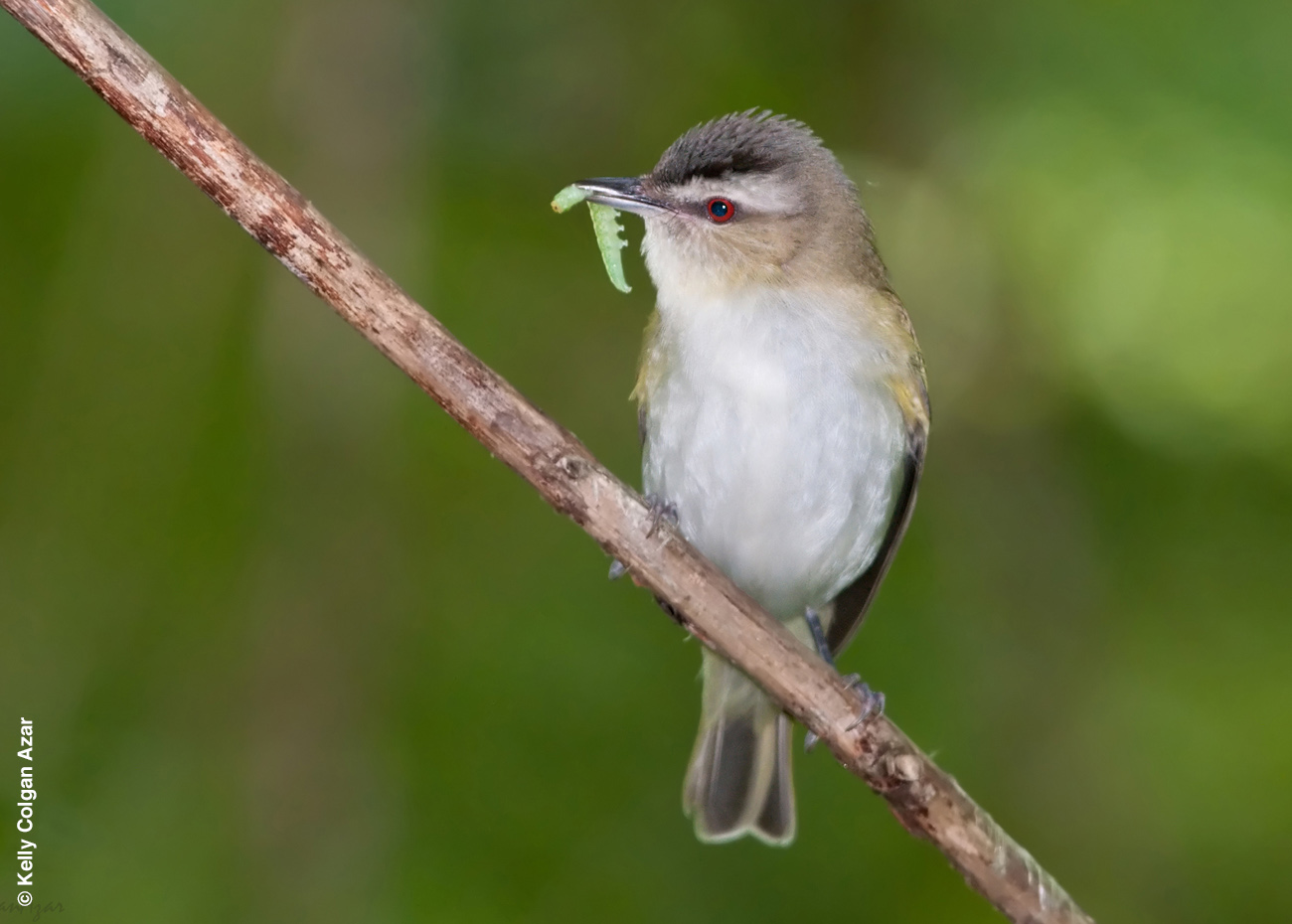
 Animalia Life
Animalia Life